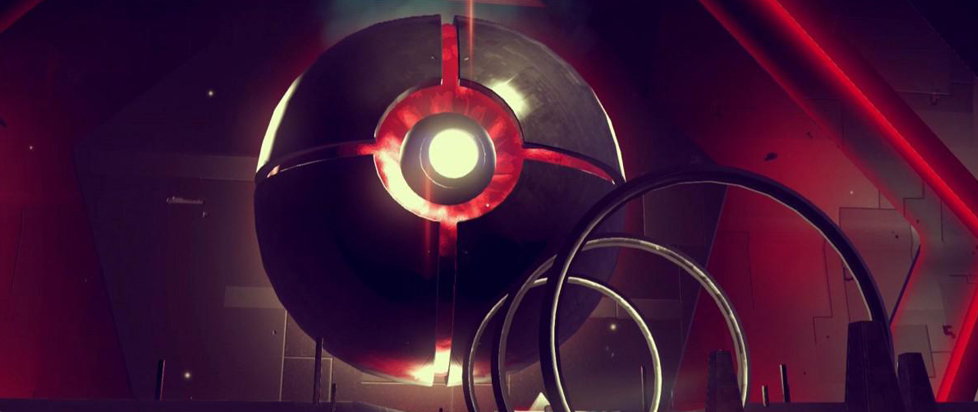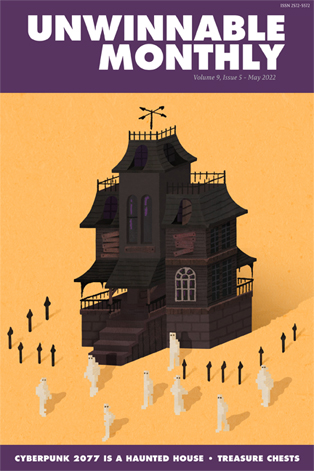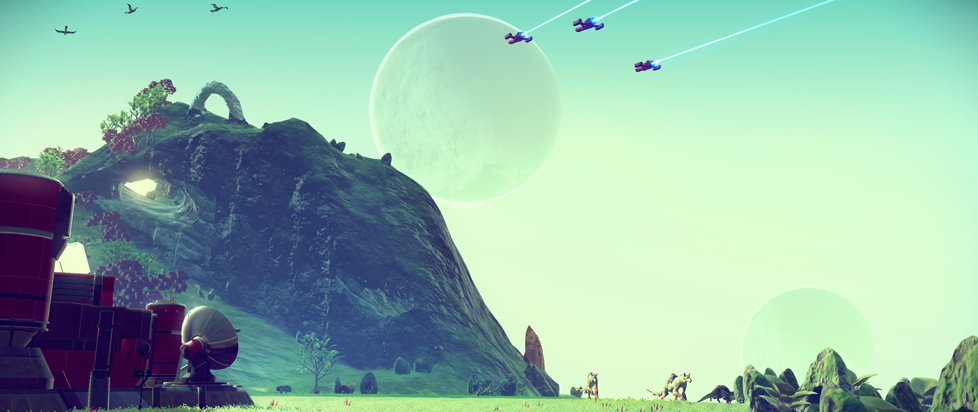
Let’s Talk About The Story of No Man’s Sky

This column is a reprint from Unwinnable Monthly #151. If you like what you see, grab the magazine for less than ten dollars, or subscribe and get all future magazines for half price.
———
Here’s the Thing is where Rob dumps his random thoughts and strong opinions on all manner of nerdy subjects – from videogames and movies to board games and toys.
———
In 2016 No Man’s Sky started out, somewhat infamously, as a fairly bare-bones disappointment (that I still liked at the time, honestly) [editor’s note: see issue 149!]. Eventually though, Hello Games started updating it. And updating it. And hasn’t stopped even now, six years after that wet fart of an initial launch. In that time, it’s been given an almost complete overhaul – with better fundamentals across the board, base building, AI-controlled exosuits, massive frigates you can use as a mobile base (or explore derelict husks of, a-la sci-fi horror movies), more kinds of ships, multiplayer and so much more. But here’s the thing: while No Man’s Sky has received a somewhat unprecedented amount of expanded content (for free, no less), it’s kind of shocking to me that barely anybody talks about its story.
Obviously, I’ll be getting into spoilers but seriously, why aren’t more people talking about the story and the general writing in No Man’s Sky?
Almost all of the standalone moments and encounters, from examining crashed starships to speaking with The Atlas, are detailed via text rather than any sort of animation or other imagery. And yet, all of them – every single one – walk a delicate line between being silly and, just, astonishingly melodramatic, in a way that makes them way more captivating than they have any right to be. A lot of them are also pretty messed up if you really pay attention to them, rather than skip ahead to see what items you’ll get from Doing The Thing. Seriously, some of those Travelers Logs delve into all kinds of scary stuff from body horror to existential dread.
Which is to say nothing of the overarching story, which I’ll admit I was surprised to find once I really started paying attention to the main missions. Each of the three primary “quests” overlap each other in a few ways, expositionally. You can try to find a fellow Traveler that sort of becomes a friend named Artemis, which eventually leads to discovering The Anomaly along with caretakers Nada and Polo, and The Atlas kind of hangs over all of them. The Artemis plotline is kind of the star of the show here, but both The Anomaly and The Atlas feed into and supplement that story in their own ways.
As for that plot, hoo-boy. I know it’s trite to compare videogame narratives to that whole “Would you kindly” thing from the first Bioshock, but seriously, the Artemis story actually pulls a similar trick. It requires a lot of work to complete all of its tasks, speak to all of its NPC, build every single piece of equipment it wants you to and branch out into secondary story threads involving entirely new characters (shoutout to Apollo), but it’s worth it.
So much of the plot involves garbled conversations over crackling static or trying to piece together garbled audio logs (displayed via text). So much is said about The Travelers and their bizarre immortality, where they do die, but they always come back in another “iteration,” which is noted as being strange by the other sentient alien races. And that’s what’s so wild about the big twist at the end: it’s all supposed to be that way, because the in-game universe of No Man’s Sky is quite literally a simulation.
It still feels weird to say that freaking No Man’s Sky pulled the rug out from under me like that but once its hand was revealed so much of the slightly off stuff in the game suddenly made sense. Transmissions weren’t full of static; they were damaged because the simulation is falling apart. The Travelers aren’t immortal, they just straight-up can continue their “game” after they “die.” Going to the center of the galaxy (the game’s original and only goal) basically resets the universe because it resets the simulation. And there were so many clues about it, too! But they’re the kind of details you likely won’t notice or even think about until you learn the truth.
A lot can be said (and has been said) about No Man’s Sky. It was an imperfect game at launch, and despite six years of extremely beefy updates it’s still an imperfect game. And mind-bending “we turned the videogame stuff into story stuff” plots aren’t as much of a shock as they once were (even Resident Evil Village had such a moment). But even so, I couldn’t help but be impressed with how Hello Games pulled it all off. The story works and, as far as I’m concerned, the writing, spread out over dozens of hours of gameplay, does the concept justice. They earned the moment.
———
Rob Rich is a guy who’s loved nerdy stuff since the 80s, from videogames to anime to Godzilla to Power Rangers toys to Transformers, and has had the good fortune of being able to write about them all. He’s also editor for the Games section of Exploits! You can still find him on Twitter, Instagram and Mastodon.




